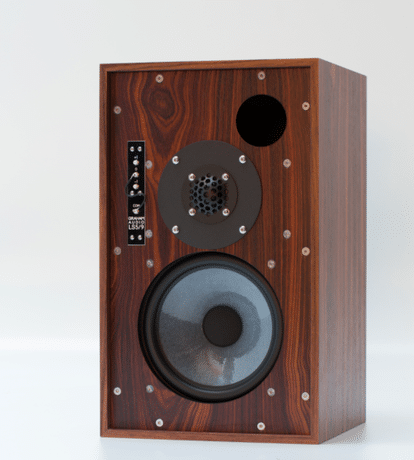Robert Green wrote
The heyday of the BBC loudspeaker research program was drawing to a close in 1983 when the original LS5/9 was developed. The LS5/9 and its larger brother the LS5/8 were really the last of the products one might think of as BBC monitors in the traditional sense. (The later LS5/12 was a different sort of transducer, and not really a creation of the Kingswood Warren group.) Things were changing at the BBC. Thatcher-esque austerity would soon shut down its speaker research program, and, in another direction, the BBC was having to deal with the monitoring of rock music—rather reluctantly, one supposes. The LS5/8 was explicitly intended, it seems, to meet the need for a monitor speaker that would play loudly. The LS5/9 is a much smaller unit—only a one-cubic-foot cabinet—but it too was expected to produce considerable sound pressure levels. But despite the additional requirement of playing louder, the LS5/9 remained true to the classic BBC principles of damped thin-wall cabinet construction and crossover circuitry that controlled the frequency response very carefully.
The LS5/9 was not quite the commercial success that earlier BBC-related models like the Spendor BC1 (which was the moral equivalent of the BBC’s LS3/6) or the LS3/5a had been. For one thing, the BBC’s ideas had become quite widespread, and accurate, flat, two-way “monitor” speakers from other sources had become widely available. There was more competition than the BC1 had seen in 1968, when it was practically the only low-coloration box monitor available.
Read more







